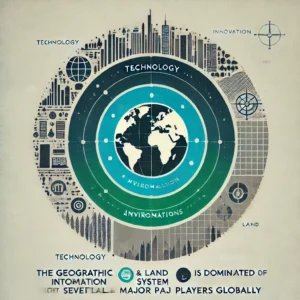Publish and Visualize Maps
In the realm of Geographic Information Systems (GIS), various industry leaders, as well as open-source platforms, provide exceptional tools to publish and visualize geographic data. Companies such as Esri, Google Maps, and Mapbox offer commercial-grade mapping platforms, while open-source alternatives like QGIS, Leaflet, and OpenStreetMap (OSM) allow users, including students, to explore mapping technologies free of cost.
Overview of Services Provided by Leading Companies and Open-Source Platforms:
- Interactive Mapping Tools: Esri’s ArcGIS provides an advanced toolset for creating custom maps, layering data, and sharing maps interactively. For a more accessible option, QGIS offers powerful GIS capabilities at no cost, making it an excellent tool for students and beginners. Additionally, Leaflet is a free JavaScript library that allows for easy integration of interactive maps into web applications.
- Data Integration: Mapbox enables users to pull data from various sources to enrich maps, while OpenStreetMap (OSM) provides freely accessible geographic data, allowing users to contribute and visualize their own maps. This crowdsourced platform is widely used by students and developers for both personal and academic projects.
- User-Friendly Interface: While Google Maps and ArcGIS Online offer polished, user-friendly interfaces, open-source options like QGIS provide comparable tools for free, enabling users to create and edit maps without requiring a commercial license. Leaflet, too, is designed to be simple and lightweight, making it a great starting point for new developers.
- Collaboration Features: ArcGIS Online offers collaborative map editing, but similar features can be found in open-source platforms. QGIS Cloud allows users to publish and share maps online for free, offering students a platform to collaborate on geographic projects in real-time.
- High-Quality Publishing Options: Mapbox and Google Maps allow for seamless map publishing on websites and mobile applications. Similarly, QGIS supports high-resolution map exports for print or digital use, making it a perfect choice for students looking to publish their work without incurring costs.
- Customization and Branding: Mapbox Studio offers extensive customization options for businesses looking to tailor their maps to a specific look. On the open-source side, Leaflet allows developers to design and customize maps using a variety of plugins, giving them the freedom to create personalized and branded maps for free.
- Mobile Compatibility: Google Maps and ArcGIS Online are designed for mobile responsiveness. Leaflet also offers mobile compatibility, making it an excellent free alternative for users who need to ensure their maps work on a variety of devices.
- Analytical Insights: Advanced analysis is a hallmark of Esri and Mapbox, but QGIS stands out in the open-source community for offering a rich set of analytical tools, including spatial analysis, raster data processing, and geographic data management—all for free. This makes QGIS an ideal platform for students or researchers working on complex GIS projects without access to paid software.
Why Choose Industry-Leading and Open-Source Mapping Solutions?
- Esri: A trusted leader in GIS, offering comprehensive spatial analysis tools for professional users.
- Google Maps: Ideal for developers looking to integrate mapping features into websites or mobile applications.
- Mapbox: A highly customizable platform perfect for those who want to personalize map visuals.
- QGIS: A powerful, open-source platform that provides professional-grade GIS capabilities at no cost.
- Leaflet: A lightweight and open-source JavaScript library for interactive maps, suitable for web developers and students.
- OpenStreetMap: A free, crowd-sourced mapping platform that allows users to create, edit, and contribute to global map data.
By leveraging the power of these industry-leading companies alongside open-source alternatives, students and professionals alike can publish, visualize, and analyze geographic data. Whether you’re looking for robust commercial tools or free, open-source solutions, the possibilities are endless.


